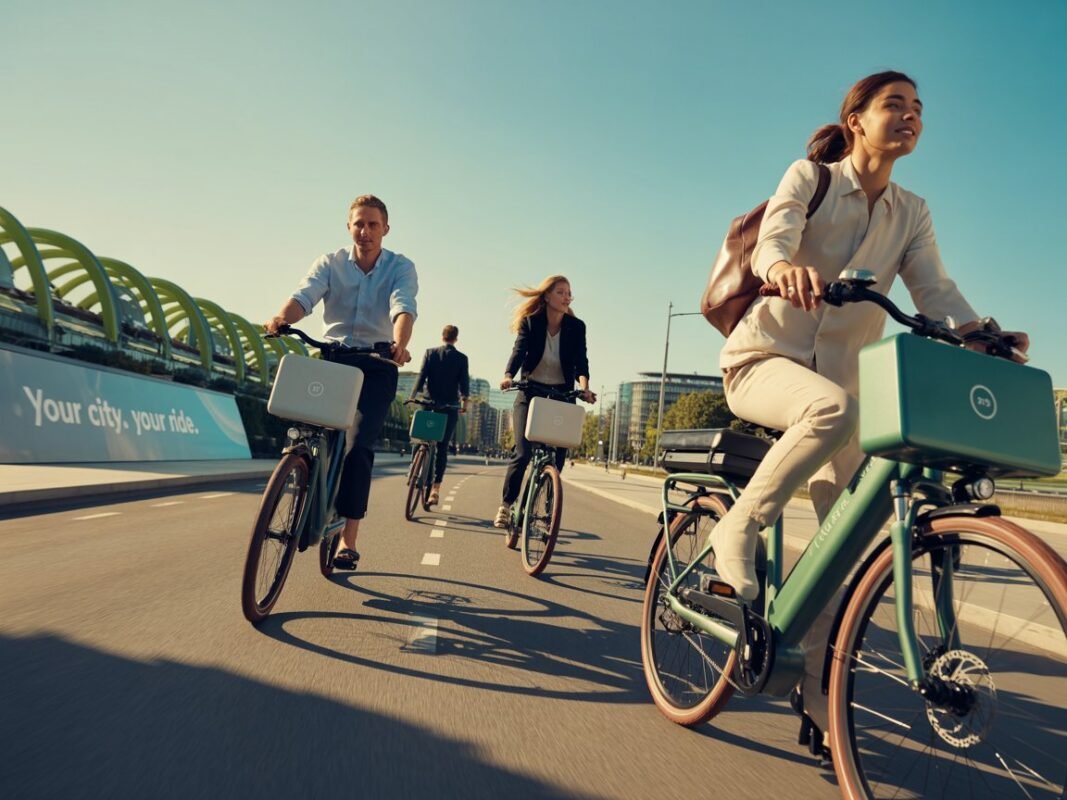Best Electric Bikes for Commuting: Your Complete 2025 Buyer's Guide
Finding the best electric bikes for commuting has gotten way more complicated in 2025, hasn't it? Between new motor technologies, battery innovations, and price wars driven by tariffs, commuters need clear answers. This guide cuts through the noise with practical insights based on extensive testing by major cycling publications and real-world user experiences.
Electric bikes transform daily commutes from sweaty ordeals into enjoyable rides. Moreover, they're proven to maintain fitness without burnout while saving thousands on transportation costs annually.
What Makes A Good Commuter E-Bike Different From Regular E-Bikes

The distinction between commuter and recreational e-bikes isn't always crystal clear. However, commuter e-bikes prioritize reliability, range, and practical features over pure performance.
Commuter models are equipped with integrated lights, fenders, and cargo racks as standard equipment. Furthermore, they're designed with upright riding positions that improve visibility in traffic while reducing strain on wrists and back during longer rides.
Key differentiators include:
- Puncture-resistant tires rated for 3,000+ miles
- Weather-sealed electronics with IPX4 rating minimum
- Quick-release batteries for indoor charging
- Built-in GPS tracking systems
Consequently, these features are reflected in slightly higher prices compared to basic recreational models. Nevertheless, the investment pays dividends through reduced maintenance and increased daily usability.
How Far Can Electric Bikes Really Go On A Single Charge
Range anxiety remains the top concern for potential e-bike commuters. Modern electric bikes deliver 20-62 miles per charge, though real-world performance depends heavily on assistance level and terrain.
Battery capacity gets measured in watt-hours (Wh), with most commuter bikes featuring 400-625Wh systems. Additionally, factors like rider weight, wind resistance, and temperature significantly impact actual range.
| Battery Size | Typical Range | Best For |
|---|---|---|
| 300-400Wh | 20-35 miles | Short urban commutes |
| 400-500Wh | 35-50 miles | Suburban routes |
| 500-625Wh | 50-75 miles | Long-distance commuting |
| Dual Battery | 100+ miles | Multi-modal trips |
Smart battery management systems are becoming standard in 2025. These systems learn your commute patterns and optimize power delivery accordingly, extending range by up to 20%.
Are Electric Bikes Worth The Investment For Daily Commuting
The economics of e-bike commuting have shifted dramatically in 2025. While initial costs range from $1,200-$4,000, the return on investment happens faster than most people realize.
Breaking down the numbers reveals compelling savings. Gas, parking, and vehicle maintenance for a 10-mile daily commute costs approximately $3,500 annually, whereas e-bike electricity and maintenance totals under $200 yearly.
Beyond financial benefits, health improvements prove substantial. Research demonstrates that e-bike commuters exercise 30% more than traditional cyclists because they ride more frequently and tackle longer distances without exhaustion.
Insurance costs have also dropped significantly. Most homeowner's policies now cover e-bikes under personal property, eliminating separate insurance needs for bikes under $3,000.
What Speed Can You Expect From Commuter E-Bikes
Speed regulations vary by region, but most commuter e-bikes are limited to 20 mph with pedal assistance. Class 3 e-bikes reach 28 mph, though these require helmet use in many jurisdictions.
Real-world commuting speeds average 15-18 mph in urban environments. Traffic lights, pedestrians, and bike lane conditions naturally moderate pace regardless of bike capabilities.
Interestingly, faster isn't always better for commuting. Higher speeds drain batteries exponentially faster and increase wear on components. Moreover, maintaining 15-17 mph provides optimal balance between arrival time and battery conservation.
How Heavy Are Electric Bikes Compared To Regular Bikes
Weight remains e-bikes' primary disadvantage, with most models weighing 40-70 pounds. Premium commuter e-bikes support riders up to 300 pounds while maintaining performance.
This added heft impacts handling and storage significantly. Apartment dwellers should consider folding models or bikes with removable batteries to reduce carrying weight.
Weight distribution matters more than total weight. Well-designed e-bikes position batteries low and centered, improving stability despite extra pounds. Furthermore, motor assistance completely negates weight penalties while riding.
Modern carbon fiber and aluminum alloys are reducing weights annually. Subsequently, 2025's lightest commuter e-bikes weigh just 35 pounds while maintaining full functionality.
Which Motor Type Works Best For Commuting
Motor placement fundamentally changes riding characteristics. Mid-drive motors deliver natural pedaling feel and superior hill climbing, while hub motors provide simpler maintenance and lower costs.
Hub motors are mounted in wheels, providing direct propulsion. These systems excel at maintaining consistent speeds on flat terrain and require minimal maintenance since they're sealed units.
Alternatively, mid-drive motors work through the bike's gears, multiplying torque for steep climbs. Professional mechanics recommend mid-drives for hilly commutes exceeding 10% grades regularly.
Torque output, measured in Newton-meters (Nm), determines acceleration and climbing ability:
- 40-50 Nm: Flat terrain commuting
- 60-75 Nm: Mixed terrain with moderate hills
- 80+ Nm: Steep hills and cargo hauling
What Maintenance Do Electric Bikes Require
Maintenance requirements mirror traditional bikes with additional electrical considerations. Regular cleaning prevents corrosion on electrical contacts while proper storage extends battery lifespan significantly.
Monthly maintenance includes:
- Tire pressure checks (improves range 10-15%)
- Chain lubrication and cleaning
- Brake pad inspection
- Battery contact cleaning
Annual professional servicing costs $150-250, covering motor diagnostics, firmware updates, and comprehensive safety checks. Additionally, keeping software updated ensures optimal performance and access to new features.
Battery replacement represents the largest long-term expense. However, proper care extends lifespan to 5-7 years or 800-1,000 charge cycles.
How Do Weather Conditions Affect E-Bike Performance
Weather significantly impacts both range and component longevity. Cold temperatures reduce battery capacity by 20-40%, while rain requires additional precautions despite weather sealing.
Most quality commuter e-bikes feature IPX4 water resistance, protecting against splashing from all directions. Nevertheless, avoiding deep puddles and pressure washing prevents premature component failure.
Winter riding demands special attention to battery care. Storing batteries indoors and installing them warm maintains optimal performance. Furthermore, winter-specific tires with aggressive tread patterns ensure safe commuting year-round.
Top 5 Budget Commuter E-Bikes
Jasion EB5 MAX Electric Bike
Delivers exceptional value with 350W motor and 32-mile range. Integrated headlight and 7-speed transmission handle varied terrain effectively despite budget pricing.
5TH WHEEL Mate Electric Bike
Features robust construction supporting 330-pound capacity. Dual shock absorption and fat tires provide comfort on rough roads, though weight reaches 68 pounds.
Bluebiko 1000W Folding Electric Bike
Powerful 1000W motor conquers steep hills effortlessly. Folding design suits apartment dwellers, yet build quality feels less refined than pricier alternatives.
ZDZA Electric Bike ZA02
Balanced performer offering 500W motor and removable battery. Step-through frame accommodates various rider heights, making it ideal for shared household use.
Soleil01 Electric Dirt Bike
Blurs lines between e-bike and motorcycle with aggressive styling. Off-road capabilities exceed commuting needs, but dual-sport versatility appeals to adventure commuters.
FAQ Section
Can I ride an electric bike in the rain?
Most commuter e-bikes handle light rain without issues. Use fenders to prevent water spray and dry the bike thoroughly after wet rides.
Do I need a special license for an e-bike?
Class 1 and 2 e-bikes (20 mph limit) require no license in most areas. Class 3 bikes may need registration depending on local regulations.
How long do e-bike batteries last?
Quality batteries maintain 80% capacity after 500-800 charge cycles. This translates to 3-5 years of daily commuting before noticeable range reduction.
Can I ride an e-bike without the motor?
Yes, all e-bikes function as regular bicycles when motors are off. However, the extra weight makes pedaling more challenging than traditional bikes.
What's the average charging time?
Standard chargers require 4-6 hours for full charge. Fast chargers reduce this to 2-3 hours but may impact long-term battery health.
Are e-bikes allowed on bike paths?
Most bike paths permit Class 1 and 2 e-bikes. Class 3 e-bikes face restrictions on certain paths, so check local ordinances.
Conclusion
Electric bikes have revolutionized commuting in 2025, offering practical solutions to urban transportation challenges. The technology has matured significantly, with improved batteries, smarter motors, and better integration making daily use genuinely practical.
Selecting the right e-bike depends on individual commute characteristics. Urban riders benefit from lightweight, nimble designs while suburban commuters need extended range and comfort features. Furthermore, considering long-term costs beyond initial purchase price ensures maximum value.
The e-bike market continues evolving rapidly. Subsequently, waiting for perfect technology means missing years of enjoyable, economical commuting. Current models deliver reliability and performance that justify investment for most commuters seeking alternatives to car-dependent transportation.

